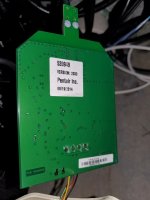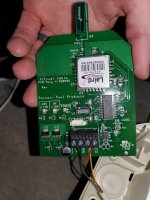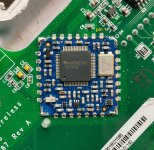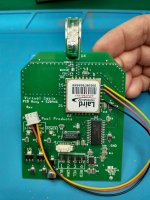- Jun 25, 2016
- 30
- Pool Size
- 15000
- Surface
- Plaster
- Chlorine
- Salt Water Generator
- SWG Type
- Pentair Intellichlor IC-20
Hello TFPs! My Pentair EasyTouch8 wireless controller is stuck on "NO COMMS" and I can't relink it. I believe the antenna board, Pentair 520949 (AKA 520946) has failed, which seems very common when searching online. The POWER LED is on solid red, and the 485 LINK / RF LINK LEDs flash red 6 times followed by a single flash of 485 LINK.
Given the ridiculous price to replace these (I'm an EE who designs production hardware and can say the production cost of these would be $10 - $30 each) and high failure rate, I'm wondering if anybody has figured out how to repair these? I can dig into it, but before spending a bunch of time reverse engineering and debugging, I'm hoping that somebody has already done that and can share what the failing component is.
Thank you!
PS: I'm hoping to eventually score a decent deal (<$350) for a ScreenLogic2 520500 adapter on EBay as a longer term solution, but the remote is handy for kids and guests.


Given the ridiculous price to replace these (I'm an EE who designs production hardware and can say the production cost of these would be $10 - $30 each) and high failure rate, I'm wondering if anybody has figured out how to repair these? I can dig into it, but before spending a bunch of time reverse engineering and debugging, I'm hoping that somebody has already done that and can share what the failing component is.
Thank you!
PS: I'm hoping to eventually score a decent deal (<$350) for a ScreenLogic2 520500 adapter on EBay as a longer term solution, but the remote is handy for kids and guests.





